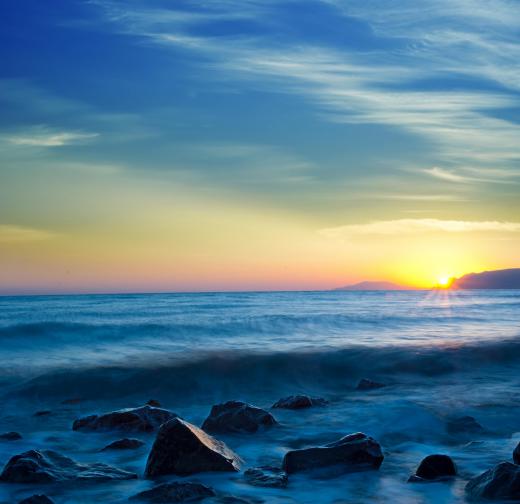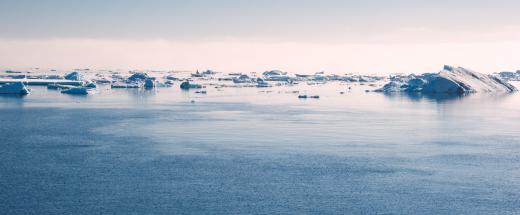What is the Hydrosphere?
 Michael Anissimov
Michael Anissimov
The hydrosphere refers to all water found on, under, or over the surface of a planet. In physical geography, it usually refers to water on or around the planet Earth, although the Jovian moon Europa is thought to have a subsurface ocean. Sometimes, this term also includes the cryosphere, or all ice on the surface, in which case that would include Mars, which has ice caps.
About 70.8% of the Earth's surface is covered by water, with 97% sea water and 3% fresh water. Water can also be found in significant portions in the atmosphere, which is thought to consist of about 1% water vapor. The oceans, with an average depth of 12,447 ft (3,794 m) — five times deeper than the average height of the continents — are thought to have a total weight of about 1.35 × 1018 tonnes, or about 1/4400 of Earth's total mass.

The Earth's life (biosphere) is heavily interdependent on the hydrosphere. Where there is little water, only certain extremophile microbes can survive. Where water is abundant, there are huge forests and biological diversity. Some of the wettest areas on Earth are rainforests, which contain two-thirds of the planet's biodiversity, despite making up only 2% of the Earth's surface.

A key process in the hydrosphere is known as the water cycle, whereby water evaporates from the oceans, rains on the mountains, and flows back to sea. The water cycle contains many little quirks and paths, such as the sublimation of water on land, and the storage of water in underground aquifers. Underground aquifers are so huge and abundant that they contain enough water for hundreds of years.
Ice sheets, covering large portions of Antarctica and Greenland, make up about 77% of the global total of freshwater. Due to global warming, many of these sheets are melting, causing the world's ocean levels to slowly rise.
AS FEATURED ON:
AS FEATURED ON:












Discuss this Article
Post your comments